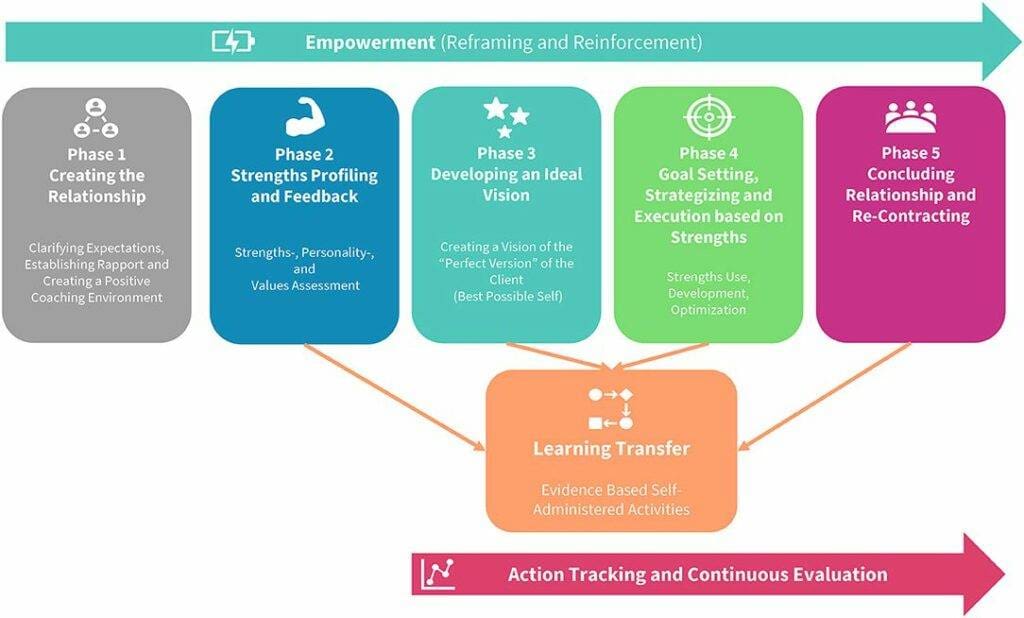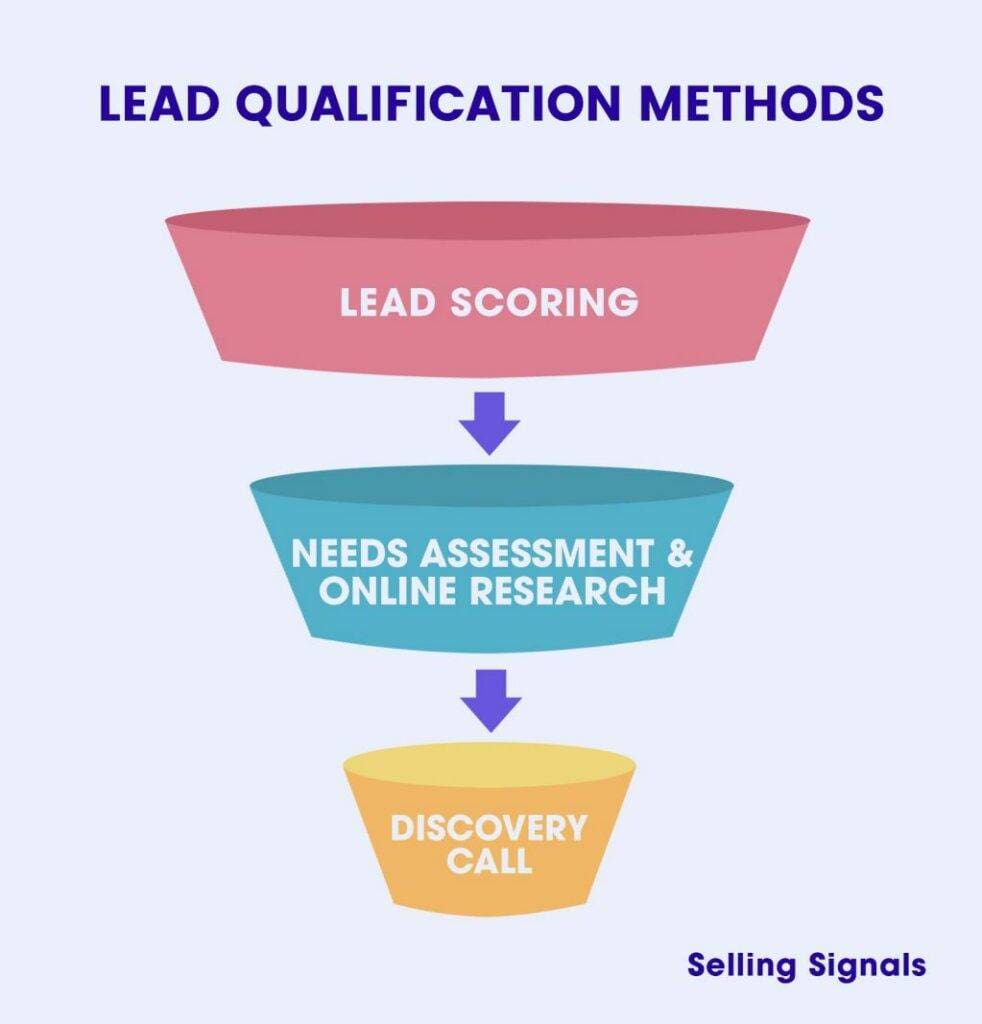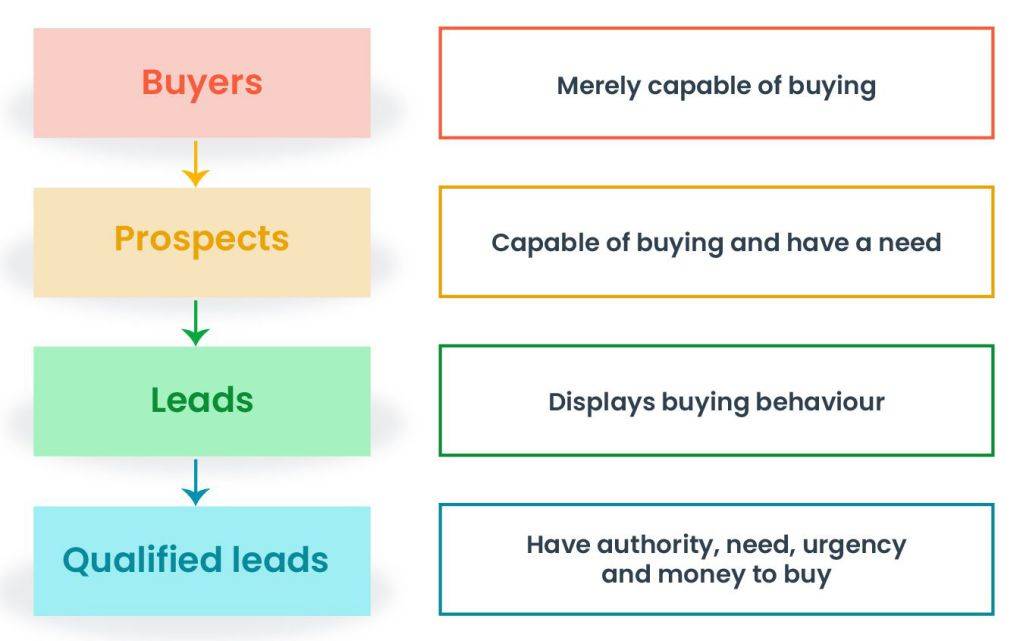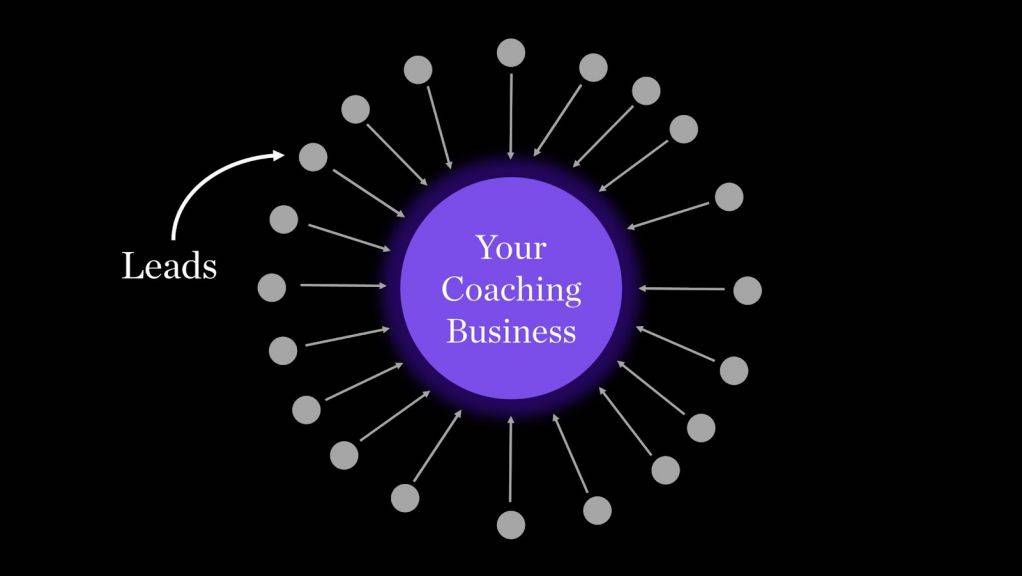
Source: www.lifecoachingprofessionally.com
Introduction to Qualifying Leads
Qualifying leads is a crucial step for life coaches and business coaches that can significantly impact the success of their coaching business. Qualifying leads refers to determining whether potential clients are a good fit for the coach’s services and if they can become paying clients. It involves gathering information and evaluating potential clients’ needs, goals, and readiness.
Importance of qualifying leads for life coaches and business coaches
Qualifying leads is important for life coaches and business coaches for several reasons:
1. Time and Energy Efficiency: Qualifying leads helps coaches identify potential clients who are genuinely interested and ready to commit to coaching. This saves time and energy by focusing on individuals more likely to convert into paying clients.
2. Targeted Approach: By qualifying leads, coaches can better understand potential clients’ specific needs and goals. This allows coaches to tailor their coaching offerings and approach to meet the unique requirements of each individual, increasing the likelihood of successful coaching outcomes.
3. Client Fit: Qualifying leads ensures coaches work with clients who align with their expertise, niche, and coaching style. This enhances the coaching experience for both the coach and the client, leading to better rapport, trust, and effective coaching.
Key benefits of qualifying leads
Qualifying leads provides several benefits for life coaches and business coaches:
1. Increased Conversion Rates: By focusing on qualified leads, coaches are more likely to convert potential clients into paying clients, leading to higher conversion rates and increased revenue.
2. Enhanced Client Satisfaction: Qualifying leads allows coaches to select clients whose needs align with their area of expertise. This increases the likelihood of successful coaching outcomes and satisfied clients.
3. Improved Time Management: By qualifying leads, coaches can prioritize and allocate their time efficiently, focusing on high-quality leads and potential clients who are more likely to benefit from their coaching services.
4. Stronger Coaching Relationships: Qualifying leads helps coaches establish strong coaching relationships with clients, as they can provide tailored coaching support that meets each individual’s specific needs and goals.
Taking the time to qualify leads is essential for life coaches and business coaches to ensure they attract and work with clients who are the right fit for their coaching services. By doing so, coaches can improve their conversion rates, deliver effective coaching, and ultimately achieve greater success in their coaching business.
 Source: www.frontiersin.org
Source: www.frontiersin.org
Understanding the Ideal Client Profile
Defining the ideal client for life coaches and business coaches
When it comes to qualifying leads, one of the crucial steps for life coaches and business coaches is understanding their ideal client profile. This profile helps coaches identify the type of client they can best serve and who will benefit the most from their services. Defining the ideal client involves considering factors such as demographics, psychographics, and goals. Some key aspects to consider when defining the ideal client for life coaches and business coaches include:
Demographics: This includes factors such as age, gender, location, occupation, and income level. Knowing the demographics of your ideal client can help you tailor your coaching approach and messaging to attract the right audience.
Psychographics: This refers to your ideal client’s psychological characteristics and lifestyle. Consider their values, beliefs, interests, and motivations. Understanding these aspects can help you connect with your ideal clients on a deeper level and address their specific needs.
Goals and Challenges: What goals and challenges may your ideal client have? Understanding these can help you position yourself as the solution to their problems and offer targeted coaching programs or services.
Identifying target audience characteristics and preferences
Once you have a clear understanding of your ideal client profile, the next step is to identify the characteristics and preferences of your target audience. This involves gathering information on their behaviors, preferences, and where they seek information. Some effective ways to identify target audience characteristics and preferences for life coaches and business coaches include:
Market Research: Conducting market research through surveys, interviews, or focus groups can provide valuable insights into your target audience’s characteristics and preferences.
Social Media Listening: Monitoring social media platforms and online communities where your target audience gathers can help you gain insights into their interests, challenges, and preferences.
Existing Client Feedback: Gathering feedback from your existing clients can provide insights into the characteristics and preferences of your target audience. Ask them about their journey, what attracted them to your coaching, and what they value the most about your services.
By understanding the ideal client profile and identifying target audience characteristics and preferences, life coaches and business coaches can better qualify leads and focus their efforts on attracting clients who are the right fit for their coaching programs or services.
Lead Generation Strategies
Effective lead generation strategies for life coaches and business coaches
Generating qualified leads is crucial for life coaches and business coaches to build a successful practice. Here are some effective lead generation strategies to consider:
1. Define your target audience: Before starting any lead generation activity, it’s essential to identify and understand your target audience. Determine their demographics, interests, and pain points to tailor your marketing messages and attract the right prospects.
2. Utilize online platforms: In today’s digital age, online platforms are a powerful tool for generating leads. Create a professional website and optimize it to attract organic traffic from search engines. Consider using lead capture forms, landing pages, and email marketing to capture and nurture leads.
3. Social media presence: Social media platforms like Facebook, Instagram, and LinkedIn offer excellent opportunities to connect with your target audience. Create engaging content, participate in relevant groups and communities, and interact with potential leads to build relationships and establish credibility.
4. Networking: Networking is still one of the most effective ways to generate leads. Attend industry conferences, join professional associations, and take part in networking events to meet potential clients and referral sources. Building strong relationships can lead to valuable word-of-mouth referrals.
5. Content marketing: Produce high-quality content that addresses your target audience’s pain points and offers valuable insights. This can include blog articles, videos, podcasts, and infographics. Distribute your content through various channels, such as your website, social media, and email newsletters, to attract and engage potential leads.
These lead generation strategies are just a starting point. Depending on your specific coaching niche and target audience, you may need to tailor your approach to maximize results. Remember to track and analyze your lead generation efforts to identify what works best for your coaching practice.
 Source: i0.wp.com
Source: i0.wp.com
Implementing Lead Qualification Techniques
Methods for qualifying leads in the coaching industry
When it comes to qualifying leads in the coaching industry, there are several effective methods that can help life coaches and business coaches identify the most promising prospects. Some common methods for lead qualification include:
1. Discovery Calls: A discovery call is an initial conversation between the coach and the prospective client to assess their needs and determine if there is a good fit. This allows coaches to gather information about the client’s goals, challenges, and expectations.
2. Questionnaires and Surveys: Coaches can use questionnaires or surveys to gather information from potential clients, asking specific questions related to their coaching needs, challenges, and readiness for coaching.
3. Social Media and Website Engagement: By monitoring engagement on social media platforms or website visits, coaches can identify potential clients who have shown interest in their content or services.
4. Referrals: Referrals are a powerful way to identify qualified leads. Clients who have had a positive experience with a coach may recommend their services to others who could benefit from their expertise.
Qualification criteria and evaluation process
Once leads have been identified, it is important for coaches to establish clear qualification criteria and develop an evaluation process to determine if a lead is a good fit for their coaching services. Some key factors to consider during the evaluation process include:
1. Goals and Needs: Assess whether the lead’s goals align with the coach’s expertise and whether the coach can effectively address their specific needs.
2. Commitment and Readiness: Evaluate the lead’s level of commitment and readiness for coaching. This can be determined through their willingness to invest time, effort, and financial resources into the coaching process.
3. Fit and Compatibility: Consider the compatibility between the coach and the potential client. This includes factors such as communication style, values alignment, and rapport.
4. Budget and Resources: Determine if the lead has the financial resources to invest in coaching and if the coach’s pricing structure aligns with their budget.
Through a thoughtful and systematic approach to lead qualification, life coaches and business coaches can ensure that they focus their time and energy on prospects most likely to benefit from their services. This increases the likelihood of successful coaching engagements and helps coaches build a strong and satisfied client base.
 Source: blog.peppercloud.com
Source: blog.peppercloud.com
Creating a Lead Qualification System
Developing a step-by-step lead qualification system
In order to effectively qualify leads, life coaches and business coaches need to develop a systematic approach that helps them identify the most promising leads. Here are some steps to consider when creating a lead qualification system:
1. Define your ideal client: Start by clearly identifying the characteristics and qualities of your ideal client. This will help you narrow down your target audience and focus on leads that are more likely to convert into paying clients.
2. Create a lead scoring system: Develop a scoring system that allows you to evaluate leads based on their level of interest, engagement, and fit with your coaching services. Assign points to each lead based on criteria such as budget, goals, and level of commitment.
3. Qualifying questions: Develop a set of qualifying questions that you can ask potential leads during the initial consultation or discovery call. These questions should help you assess the lead’s needs, challenges, and willingness to invest in coaching.
4. Prioritize leads: Once you have gathered the necessary information, prioritize leads based on their score and level of qualification. This will help you allocate your time and resources more effectively.
Tracking and organizing leads effectively
To ensure that your lead qualification system is effective, it’s important to have a reliable method for tracking and organizing leads. Here are some tips to help you stay organized:
• Use a CRM system: Invest in a customer relationship management (CRM) system that tracks and manages your leads effectively. This will help you keep all relevant information in one place and access it easily when needed.
• Categorize leads: Create categories or tags within your CRM system to categorize leads based on their level of qualification, industry, or any other relevant criteria. This will make it easier for you to sort and prioritize leads.
• Set reminders: Use your CRM system or a calendar to set reminders for follow-up activities and scheduled calls or meetings with leads. This will help you stay on top of your lead nurturing process and ensure that you are proactively engaging with potential clients.
• Regularly review and update: Regularly review your lead qualification system and make updates as needed. This could include adding new qualifying questions, adjusting your scoring system, or refining your ideal client profile based on feedback and insights from your coaching practice.
By creating a step-by-step lead qualification system and implementing effective tracking and organization strategies, life coaches and business coaches can streamline their lead generation process and focus on leads that are more likely to convert into valuable clients.
 Source: markooo.com
Source: markooo.com
Effective Communication with Leads
Establishing rapport and building relationships with potential clients
Effective communication is crucial when qualifying leads for life coaches and business coaches. Here are some strategies to establish rapport and build relationships with potential clients:
Active Listening: Take the time to listen actively to your potential clients, understanding their needs, goals, and challenges. This shows that you value their perspective and establishes trust from the very beginning.
Empathy: Show empathy towards your leads by acknowledging their emotions and providing a supportive and understanding environment. Displaying empathy helps build trust and makes potential clients feel heard and valued.
Ask Open-ended Questions: Use open-ended questions to encourage leads to share more about their concerns, aspirations, and motivation for seeking coaching. This allows you to gather valuable information while demonstrating your genuine interest in their success.
Personalization: Tailor your communication and messages to each lead’s specific needs and goals. This personal touch shows that you have taken the time to understand their unique situation and are committed to providing a personalized coaching experience.
Crafting personalized messages and offering value
When communicating with leads, it’s important to craft personalized messages and offer value that resonates with their individual needs. Here are some tips for effective communication:
Address Pain Points: Identify and address the pain points or challenges your leads are experiencing. Show them that you understand their struggles and explain how your coaching services can help them overcome these obstacles.
Highlight Benefits: Clearly articulate the benefits and outcomes that potential clients can expect from your coaching services. Show how your expertise and guidance can help them achieve their desired goals and transform their lives or businesses.
Share Success Stories: Share success stories or case studies of past clients who have achieved remarkable results through your coaching. This provides social proof and instills confidence in potential clients that your coaching methods are effective.
Offer Free Resources: Provide valuable free resources such as e-books, webinars, or guides offering practical tips and insights related to their concerns. This showcases your expertise and willingness to help, further building trust and credibility.
Remember, effective communication is a two-way street. Be responsive, timely, and maintain open lines of communication with your leads. By establishing rapport, offering personalized messages, and providing value, you can increase your chances of qualifying leads and converting them into loyal coaching clients.
 Source: lovelyimpact.com
Source: lovelyimpact.com
Identifying Pain Points and Challenges
Understanding the pain points and challenges of potential clients
As a life coach or business coach, it is essential to identify potential clients’ pain points and challenges to qualify leads effectively. Understanding their specific needs and struggles will help you determine if your coaching services align with their objectives and if you can provide valuable solutions. Some critical steps to understanding their pain points and challenges include:
- Active Listening: Pay close attention to what potential clients are saying during initial consultations or conversations. Listen for recurring themes or issues that they express a desire to overcome or improve.
- Asking the Right Questions: Pose thoughtful and probing questions that delve into their goals, aspirations, and areas of dissatisfaction or frustration. This will help you uncover the underlying pain points they may not even be aware of.
- Empathy and Emotional Intelligence: Show empathy and display emotional intelligence to create a safe space for potential clients to share their challenges and concerns openly. This will foster trust and a deeper understanding of their specific needs.
Addressing client needs to provide valuable solutions
Once you have identified potential clients’ pain points and challenges, it is crucial to address their needs and provide valuable solutions. This is where your expertise as a coach comes into play. Some strategies for addressing client needs include:
- Tailoring Coaching Programs: Customize your coaching programs to target the specific pain points and challenges identified. This ensures that potential clients receive the support they need to overcome their obstacles and achieve their desired outcomes.
- Transparent Communication: Clearly communicate the benefits and value your coaching services can provide in addressing their pain points and challenges. This will help potential clients see the direct impact your coaching can have on their lives or businesses.
- Continuous Support: Offer ongoing support and guidance to address any additional challenges that may arise during the coaching journey. This demonstrates your commitment to their success and provides added value to your coaching services.
By understanding potential clients’ pain points and challenges and addressing their specific needs, you can effectively qualify leads and provide valuable solutions as a life coach or business coach.
Managing Lead Follow-Up and Conversion
Strategies for effective lead follow-up and conversion
As a life coach or business coach, qualifying leads is just the first step in the process of acquiring new clients. Managing lead follow-up and conversion is crucial to turning those leads into paying clients. Here are some effective strategies to help you in this process:
1. Timely response: When a lead reaches out to you, it’s important to respond promptly. A timely response shows your professionalism and dedication to helping them with their needs.
2. Personalization: Tailor your communication to each lead’s specific needs and challenges. Show them that you understand their unique situation and demonstrate how your coaching services can address their specific goals.
3. Build rapport and trust: Establishing a strong connection with your leads is essential for conversion. Take the time to build rapport and trust by actively listening to their concerns, providing valuable insights, and offering genuine support and guidance.
4. Clear value proposition: Clearly articulate the value of your coaching services and how they can benefit the lead. Highlight the specific outcomes they can expect to achieve through working with you.
5. Follow-up strategies: Implement a systematic follow-up strategy to stay top of mind with leads. This can include regular email newsletters, personalized messages, and invitations to events or webinars.
Nurturing leads and converting them into paying clients
Converting leads into paying clients requires a nurturing approach. Here are some effective techniques to help you nurture leads and increase your conversion rates:
1. Provide valuable content: Share insightful content, such as blog posts, videos, or podcasts, that educates and inspires your leads. This builds credibility and positions you as an expert in your field.
2. Offer free consultations or discovery calls: Provide an opportunity for leads to engage with you one-on-one. This allows you to understand their needs in more detail and demonstrate the value of your coaching services.
3. Create customized proposals: Tailor your proposals to each lead’s specific goals and challenges. Clearly outline the coaching programs or packages you offer, pricing, and timelines.
4. Showcase testimonials and success stories: Share testimonials and success stories from previous clients to showcase the effectiveness of your coaching services. This builds trust and confidence in your abilities.
5. Provide ongoing support and accountability: Demonstrate that you are committed to supporting your clients beyond the initial engagement by offering ongoing support and accountability. This helps to build long-term relationships and encourages referrals.
By implementing these strategies and techniques, you can effectively manage lead follow-up and conversion, ultimately growing your coaching business and helping more clients achieve their goals.
 Source: www.rattleback.com
Source: www.rattleback.com
Tracking and Analyzing Lead Qualification Results
Measuring and analyzing the effectiveness of lead qualification efforts
Tracking and analyzing the results of lead qualification efforts is crucial for life coaches and business coaches to optimize their strategies and achieve better conversion rates. Here are some steps to measure and analyze the effectiveness of lead qualification efforts:
- Document and categorize leads: Maintain a detailed record of each lead, including their contact information, source of the lead, and any additional qualifying information obtained during the initial interaction.
- Define qualification criteria: Clearly define the criteria that determine whether a lead is considered qualified or unqualified. This could include factors such as budget, needs alignment, and readiness to commit.
- Track conversion rates: Monitor the conversion rates from qualified leads to paying clients. This will help identify the effectiveness of the lead qualification process in identifying high-quality prospects.
- Analyze lead sources: Evaluate the effectiveness of different lead sources and determine which channels generate the most qualified leads. This analysis can help allocate resources and focus on the most successful channels.
Key metrics and indicators to monitor:
- Conversion rate: Track the percentage of qualified leads that convert into paying clients. This metric indicates the overall effectiveness of the lead qualification process.
- Lead quality: Assess the quality of qualified leads by analyzing key indicators such as the level of engagement, responsiveness, and alignment with your coaching services.
- Cost per qualified lead: Calculate the cost associated with acquiring each qualified lead. This metric helps determine the efficiency and cost-effectiveness of lead generation strategies.
- Lead source performance: Evaluate the performance of different lead sources and determine which channels are generating the highest number of qualified leads. This analysis allows for better resource allocation and optimization.
By tracking and analyzing these key metrics, life coaches and business coaches can identify areas for improvement in their lead qualification process and make data-driven decisions to increase conversion rates and grow their coaching businesses.
Conclusion
Importance of qualifying leads for life coaches and business coaches
Qualifying leads is a crucial step for life coaches and business coaches in order to ensure that they are investing their time and resources into potential clients who are the right fit for their services. By qualifying leads, coaches can identify individuals who are genuinely interested in and committed to achieving their goals. This saves coaches from wasting their time on leads who are not ready or willing to invest in their services, allowing them to focus their efforts on clients who are more likely to benefit from their expertise. Additionally, qualifying leads helps coaches to build a strong client base of individuals who are motivated, engaged, and more likely to achieve success through coaching.
Tips for successful lead qualification and conversion
- Clearly define your ideal client profile: Identify the specific characteristics, goals, and challenges of the individuals you want to work with. This will help you target your marketing efforts and attract the right leads.
- Use effective lead generation techniques: Implement strategies such as content marketing, social media advertising, and networking to attract genuinely interested leads in your coaching services.
- Develop a lead qualification process: Create a systematic process to evaluate potential leads based on their level of interest, budget, and suitability for your coaching services. This can include phone interviews, questionnaires, or assessments.
- Build a relationship: Take the time to understand your leads’ goals, challenges, and motivations. Engaging in meaningful conversations and providing value through content and resources that address their needs.
- Present your offerings clearly: Clearly communicate the benefits and value of your coaching services to potential clients. Make sure they understand how your coaching can help them achieve their goals.
- Follow up consistently: Regularly follow up with leads who have expressed interest in your coaching services. Stay top-of-mind and provide further information or support as needed.
- Track your conversion rates: Monitor the success of your lead qualification process by tracking the number of leads who convert into paying clients. Use this data to refine your approach and improve your conversion rates over time.
By implementing these tips, life coaches and business coaches can effectively qualify leads and maximize their chances of converting them into loyal clients who will benefit from their coaching services.



